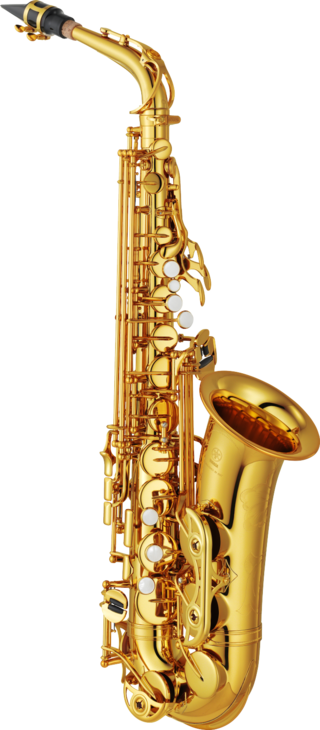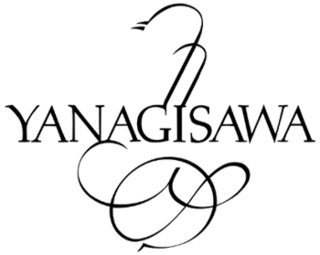 | |
| Type | Limited liability (GmbH) |
|---|---|
| Genre | Musical instrument manufacturers |
| Founded | 1925 (Julius Keilwerth) |
| Headquarters | , |
| Parent | Buffet Crampon |
| Website | julius-keilwerth |
The Julius Keilwerth company is a German saxophone manufacturer, established in 1925.
 | |
| Type | Limited liability (GmbH) |
|---|---|
| Genre | Musical instrument manufacturers |
| Founded | 1925 (Julius Keilwerth) |
| Headquarters | , |
| Parent | Buffet Crampon |
| Website | julius-keilwerth |
The Julius Keilwerth company is a German saxophone manufacturer, established in 1925.
Julius Keilwerth first apprenticed for the Kohlert company in Graslitz, Czechoslovakia. After this apprenticeship, Julius Keilwerth and his brother, Max, established a workshop in their home around 1925 or 1926. They primarily manufactured saxophones for Adler and FX Hüller. The Julius Keilwerth company became one of the largest saxophone manufacturers in Europe by the start of WWII, with approximately 150 workers. After World War II, the company relocated to its present headquarters at Nauheim, Germany.
In 1948, the old Julius Keilwerth production facilities in Graslitz, now Kraslice, became part of the Czech Amati collective, however the first saxophones that Amati sold were still stamped with the "JGK - Best in the World" trademark, had the model name "Toneking" and had Julius Keilwerth serial numbers.
Boosey & Hawkes purchased Keilwerth in 1989 and merged the company with Schreiber in 1996. The combined company was sold to The Music Group in 2003. In 2006 The Music Group was broken up and Schreiber & Keilwerth became an independent company. In March 2010, Schreiber & Keilwerth filed for bankruptcy. On 1 August 2010 they were acquired by Buffet Crampon.
Historical models include:
Most of these historical models were also available with different "packages," such as "EX" ("Exklusiv") with more elaborate engraving, additional keywork, additional mother-of-pearl inlay, or drawn and rolled tone holes.
Julius Keilwerth also produced a limited quantity of a trumpet called the "Toneking 3000." There may have been other brief forays into making other woodwinds or brasswinds, but no records are available as of this writing (February 2012).
In 1986 the company hired jazz saxophonist Peter Ponzol as a consultant to refine and redesign Keilwerth saxophones for the jazz market. This resulted in the "Modell Peter Ponzol" alto and tenor saxophones. The modern lineup of Keilwerth saxophones is derived from the Modell Peter Ponzol.

A "stencil" saxophone is a saxophone made by a manufacturer that is then sold to another company that literally takes a stencil and engraves their own name/information on the horn. The Julius Keilwerth company not only provided entire saxophones to other companies as stencils, but provided saxophone bodies for other companies to affix their own keywork to. As a general rule, Keilwerth stencil saxophones are stamped "Made in Germany." Some Keilwerth stencils have rolled tone-holes, and other have conventional straight tone-holes.
Some of the best known of the Keilwerth stencils are those made for the W. T. Armstrong Company:-
Note: later H. Couf models, like the 3200 and Royalist II were made by the United Musical Instruments, not the Julius Keilwerth company.
Other significant entire horn Keilwerth stencils include:-
Note: some saxophones (e.g., Voss, Roxy, Senator, and De Villiers etc.) that appear to have been made by Keilwerth were in fact manufactured by another German company called Dörfler & Jörka (also based in Nauheim) between 1949 and 1968. The design and location of the neck screw (which is completely different from the type used by Keilwerth) is a simple but accurate method of identifying Dörfler & Jörka instruments.
Keilwerth stopped supplying stencil instruments after introduction of the Modell Peter Ponzol in the mid-to-late 1980s.
By the end of the 1980s, Keilwerth had introduced its SX90R series saxophones and gained endorsements from jazz musicians such as Branford Marsalis, Courtney Pine, Ernie Watts, Don Wise, James Moody, Ron Holloway, Mike Smith and David Liebman.
Julius Keilwerth markets a range of student/intermediate and professional saxophones, from the soprano to bass saxophones. As of 2009 Keilwerth produced ST90 student range, the EX90 intermediate range and the SX90, CX90, SX90R professional range, with the SX90R featuring soldered-on tonehole rings (distinct from rolled tonehole rims formed from the drawn chimneys). After 2010 the product line was consolidated to SX90 and SX90R professional instruments and ST series student/intermediate instruments. In 2013 Keilwerth introduced the MKX professional alto and tenor saxophones with a smaller bore for a more focused sound.
Specific

The saxophone is a type of single-reed woodwind instrument with a conical body, usually made of brass. As with all single-reed instruments, sound is produced when a reed on a mouthpiece vibrates to produce a sound wave inside the instrument's body. The pitch is controlled by opening and closing holes in the body to change the effective length of the tube. The holes are closed by leather pads attached to keys operated by the player. Saxophones are made in various sizes and are almost always treated as transposing instruments. Saxophone players are called saxophonists.

The contrabassoon, also known as the double bassoon, is a larger version of the bassoon, sounding an octave lower. Its technique is similar to its smaller cousin, with a few notable differences.

The alto saxophone is a member of the saxophone family of woodwind instruments. Saxophones were invented by Belgian instrument designer Adolphe Sax in the 1840s and patented in 1846. The alto saxophone is pitched in E♭, smaller than the B♭ tenor but larger than the B♭ soprano. It is the most common saxophone and is used in popular music, concert bands, chamber music, solo repertoire, military bands, marching bands, pep bands, and jazz.

Grover Washington Jr. was an American jazz-funk and soul-jazz saxophonist and Grammy Award winner. Along with Wes Montgomery and George Benson, he is considered by many to be one of the founders of the smooth jazz genre. He wrote some of his material and later became an arranger and producer.
C. G. Conn Ltd., sometimes called Conn Instruments or commonly just Conn, is a former American manufacturer of musical instruments incorporated in 1915. It bought the production facilities owned by Charles Gerard Conn, a major figure in early manufacture of brasswinds and saxophones in the USA. Its early business was based primarily on brass instruments, which were manufactured in Elkhart, Indiana. During the 1950s the bulk of its sales revenue shifted to electric organs. In 1969 the company was sold in bankruptcy to the Crowell-Collier-MacMillan publishing company. Conn was divested of its Elkhart production facilities in 1970, leaving remaining production in satellite facilities and contractor sources.

Buffet Crampon SAS is a French manufacturer of wind instruments based in Mantes-la-Ville, Yvelines department. The company is the world market leader in the production of clarinets of the Boehm system. Its subsidiary, Buffet Crampon Deutschland GmbH, founded in 2010 and based in Markneukirchen, Vogtland, Sachsen, is the world market leader in the manufacture of brass instruments. To manufacture and sell its products, the BC Group employed around 1000 people worldwide at the beginning of 2021, 470 of them as employees of BC Germany alone. The management of the group has been in the hands of Jérôme Perrod since 2014.

Henri Selmer Paris is a French enterprise, manufacturer of musical instruments based at Mantes-la-Ville near Paris. Founded in 1885, it is known as a producer of professional-grade woodwind and brass instruments, especially saxophones, clarinets and trumpets. Henri Selmer Paris used to be family-owned but was sold to Argos-Wityu in 2018.
Leon Brown "Chu" Berry was an American jazz tenor saxophonist during the 1930s.

The C melody saxophone, also known as the C tenor saxophone, is a saxophone pitched in the key of C one whole tone above the common B-flat tenor saxophone. The C melody was part of the series of saxophones pitched in C and F intended by the instrument's inventor, Adolphe Sax, for orchestral use. The instrument enjoyed popularity in the early 1900s, perhaps most prominently used by Rudy Wiedoeft and Frankie Trumbauer, but is now uncommon.

Kraslice is a town in Sokolov District in the Karlovy Vary Region of the Czech Republic. It has about 6,600 inhabitants. It was a large and important town until World War II. It is known for the manufacture of musical instruments.
The Buescher Band Instrument Company was a manufacturer of musical instruments in Elkhart, Indiana, from 1894 to 1963. The company was acquired by the H&A Selmer Company in 1963. Selmer retired the Buescher brand in 1983.

Nauheim is a municipality in Groß-Gerau district in Hesse, Germany. Nauheim is located southwest of Frankfurt am Main and is part of the metropolitan region of Frankfurt. It lies in the Hessian Ried.

Amati Kraslice is a manufacturer of wind and percussion instruments based in Kraslice, Czech Republic. It was formed in 1948 as a national cooperative of several extant manufacturers, and privatised in 1993 after the dissolution of Czechoslovakia.

Yanagisawa Wind Instruments Co., Ltd. is a Japanese woodwind instrument manufacturing company known for its range of professional grade saxophones. Along with Yamaha, they are one of the leading manufacturers of saxophones in Japan. The company currently manufactures sopranino, soprano, alto, tenor, and baritone saxophones.
Saxophone tone holes are tone holes that exist in the body and bell of a saxophone. They are strategically placed in order to achieve a variety of notes while holding the best possible intonation.

The Selmer Mark VI is a saxophone produced from 1954 to 1981. Production shifted to the Mark VII for the tenor and alto in the mid-1970s, and to the Super Action 80 for the soprano and baritone saxophones in 1981. The sopranino saw limited production until about 1985.

Vito is a brand name of Leblanc, started in 1951.

King Musical Instruments is a former musical instrument manufacturing company located in Cleveland, Ohio, that used the trade name King for its instruments. In 1965 the company was acquired by the Seeburg Corporation of Eastlake, Ohio, and the name changed to "King Musical Instruments".
Herbert Couf was an American clarinetist, saxophonist, composer, music store owner, music instrument manufacturer executive, and an importer of music instruments. Couf had been the principal clarinetist with the Detroit Symphony Orchestra under Paul Paray until he retired to open Royal Music Center and commit his full attention to the business of music.
Balanced action refers to new models of saxophones and trumpets introduced by Henri Selmer & Cie during the 1930s, and has different meanings depending on whether one is referring to the trumpet or saxophone model.